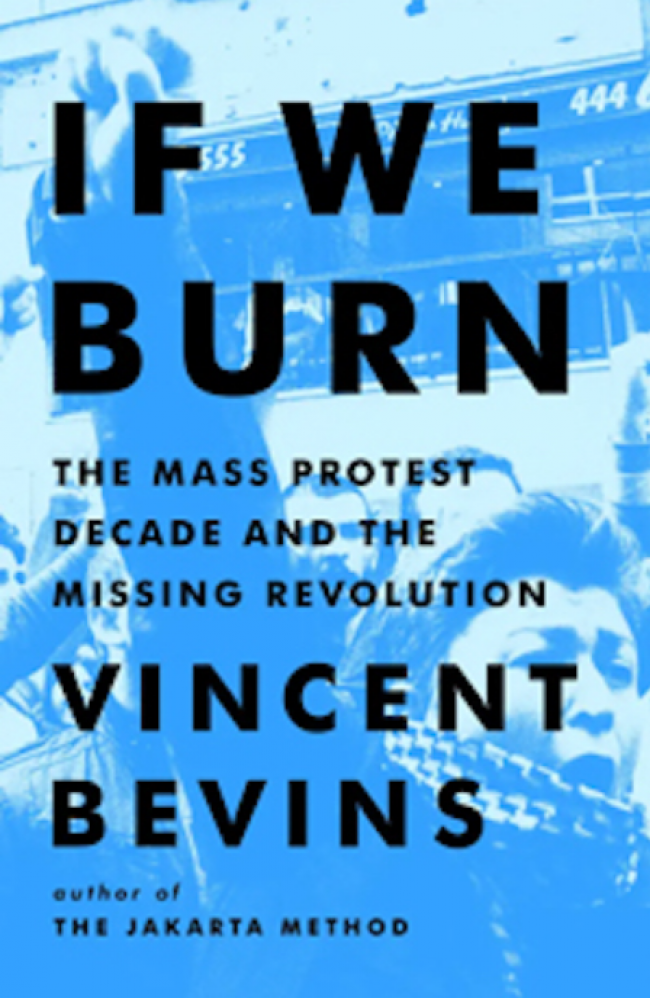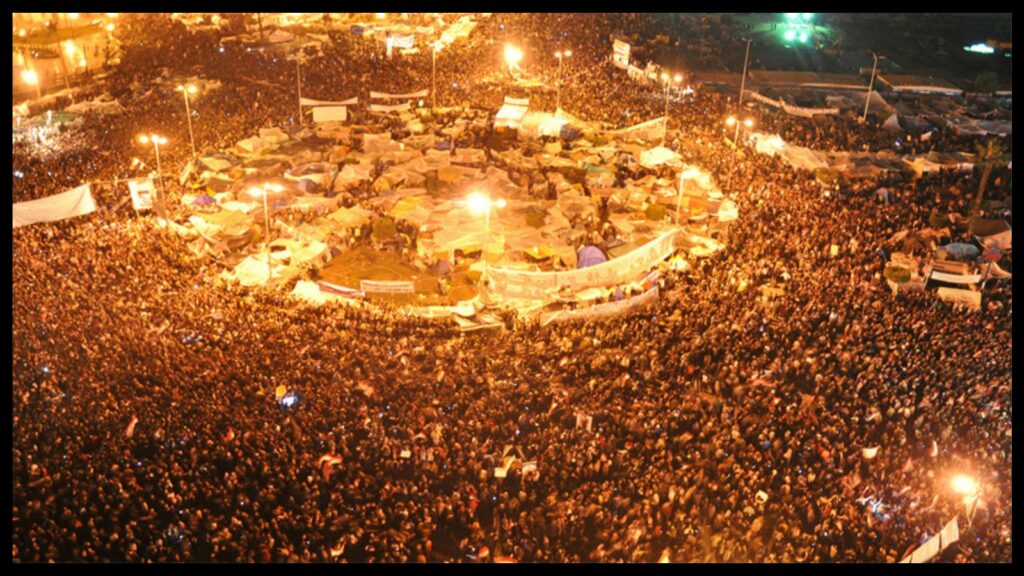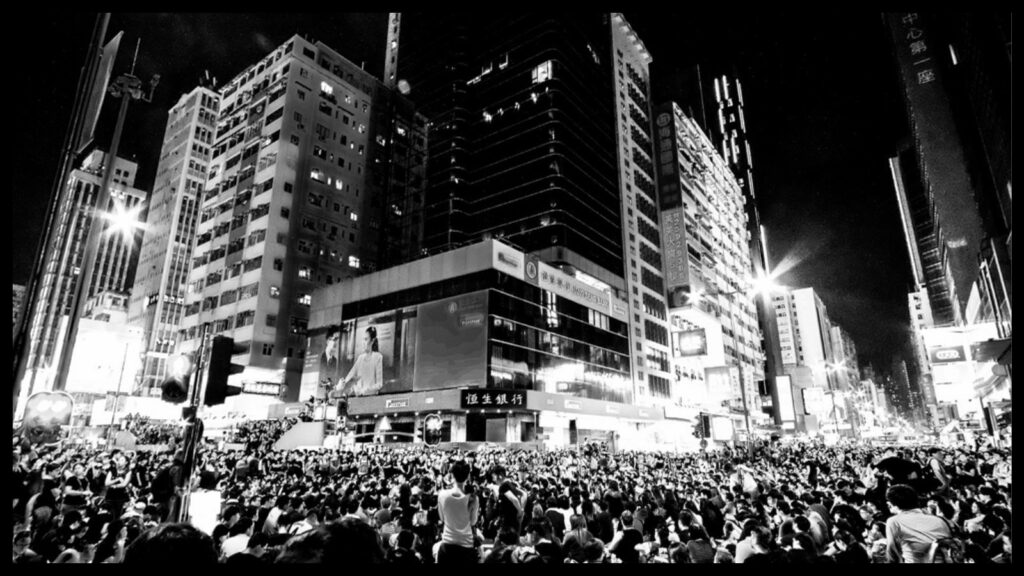Articles Menu

Dec. 29, 2023
A new book takes a broad look at the protest movements of the 2010s and asks why—despite being massive—most of these movements fell far short of their goals. In this review, David Camfield takes issue with the author’s prescription for building more successful struggles.
Journalist Vincent Bevins earned attention with his book The Jakarta Method: Washington’s Anticommunist Crusade and the Mass Murder Program that Shaped Our World. In that study, published in 2020, he documented how, in the second half of the 20th century, the U.S. state, along with its allies and proxies, killed more than one million people in the Global South in anticommunist campaigns of “intentional mass murder” against leftists or people tagged as leftists. That figure doesn’t even “include deaths from regular war, collateral damage from military engagements, or unintentional deaths (starvation, disease) caused by anticommunist governments.”
Now in his new book, If We Burn: The Mass Protest Decade and the Missing Revolution, Bevins surveys “mass protest explosions” around the world between 2010 and 2020. Already reviewed in The New York Times and other major newspapers, If We Burn was the subject of a double episode of the podcast The Dig, which has a significant audience on the U.S. Left. The book will influence how readers think about politics, so the conclusions that Bevins draws are worth discussing.
If We Burn looks at events in “Tunisia, Egypt, Bahrain, Yemen, Turkey, Brazil, Ukraine, Hong Kong, South Korea, and Chile,” drawing on many interviews with participants. Brazil, where Bevins worked, receives particular attention. The book also touches on events in Indonesia, Libya, Syria, and a couple of other countries, as well as Occupy Wall Street. While sympathetic to people who took part in these eruptions, Bevins suggests that too often activists used an approach he sums up this way:
- Protests and crackdowns lead to favorable media (social and traditional) coverage
- Media coverage leads more people to protest
- Repeat, until almost everyone is protesting
- ????
- A better society.
His assessment is that in seven out of the ten countries he studied, the outcome was “something even worse than failure. Things went backward” except in Chile and South Korea, where he sees success, and Ukraine, “a kind of draw.”
The problem is that, as two very different Brazilian interviewees both put it, “There is no such thing as a political vacuum.” Bevins warns that “movements that cannot speak for themselves will be spoken for.” He argues that when mass protests weaken a government or ruler or drive them from office, they create a political vacuum. If protesters can’t fill that vacuum, either by taking office or negotiating reforms that resolve the crisis, right-wing political forces outside or within the state apparatus will move in. The July 2013 military coup in Egypt and the 2016 impeachment of President Dilma Rousseff of the Workers’ Party (PT) in Brazil are two examples of reactionary outcomes. But “things could have gone differently,” he writes, and such setbacks aren’t inevitable.

This is how Bevins explains the influential flawed approach that fed defeat: “a preexisting set of ideological currents, developed in moments of anti-Soviet and neo-anarchist thinking, gained particular momentum in the era of the ‘end of history’ (the 1990s) and then found elective affinity with technological and corporate developments in the 2000s.” Social media platforms (what Richard Seymour rightly calls “the social industry”) facilitate people learning about state repression and mobilizing mass protests. That, along with a crisis of “representative government and perhaps even representation itself,” and the growth of individualism, “proved to be a dynamite combination.”
The alternative, Bevins suggests, is to build democratic organizations before social explosions happen: “If you want to help people, if your goal is to confront the problems facing humanity, that means a focus on ends,” not just means, “and it means constructing a movement that can stand the test of time, in addition to remaining democratic and accountable.” He is sympathetic to “Leninism,” which he sees as as an “organizational philosophy” involving “a small vanguard of professional revolutionaries, strictly disciplined and hierarchically organized.”
If We Burn tells the story of the movements it covers in broad strokes. Its extensive interviews give readers a sense of what a selection of participants experienced and thought. It doesn’t snipe at activists from the vantage point of a supposedly neutral observer, but is written in a spirit of learning from the weaknesses of movements (“auto-criticism”) for which some participants gave their lives and many more were injured and jailed in order in order to do better. The book also identifies critical problems with a political approach that has been very influential in the eruptions Bevins studies and beyond, one that perpetuates what Jo Freeman called “the tyranny of structurelessness.” While this approach has lost a lot of influence in the United States and elsewhere in recent years with the rise of politics that treat electing leftists into government as the key to making change, it lives on in other movements, including in Extinction Rebellion and among some autonomists and anarchists.
If We Burn recognizes how high the stakes are and how right-wing forces can and will take advantage of the weaknesses and mistakes of uprisings against injustice. And Bevins is absolutely right to argue for the importance of building democratic mass organizations inside and outside workplaces. Missing from If We Burn, however, is deeper analysis of the conditions out of which protests erupted, including the impact of the “global slump” that began in 2008, and of the social and political forces. For example, readers won’t come away understanding how the “June Days” in Brazil in 2013 were part of, as Sean Purdy puts it, “a wider cycle of protests and successful strikes that began in 2012 and continued until the middle of 2014, involving many precarious workers and social movements” or that the PT-led federal government of the time had implemented social reforms within the confines of neoliberal capitalism it accepted,
sustained by the highly favorable position of Brazil in world export markets until 2012 and a broad political alliance in Congress with centrist and even conservative parties. There was a deliberate policy of conciliating the interests of the various sectors of capital and their political representatives with the aspirations of the PT’s base in the working class and social movements.
Minor weaknesses include its caricatured idea of Leninist “organizational philosophy” severed from the revolutionary socialism of the Bolsheviks and a misleading depiction of the New Left of the 1960s and 1970s in the United States and Western Europe. (For a good discussion of Leninism see Charlie Post, “Leninism?”)
More important is how If We Burn explains the political limits of the upheavals it examines. It emphasizes activists’ flawed approach without delving into what social and political conditions helped this approach gain influence. Much more was involved than ideas generated in imperialist countries and diffused globally along with—and through—the social industry. What unfolded was molded by the discrediting of the major political projects of the Left in the 20th century—social democracy, “actually existing socialism,” and Third World nationalism—and by the failure (so far) to develop a radical alternative with mass credibility. This situation is in part connected to the decline of the classical workers’ movement, which I’ve described elsewhere as “configurations of workers’ organizations with a strong relationship to at least a small but significant minority of the class that affirm a commitment to the creation by workers of a fundamentally different society.”

To the extent that it points to an alternative approach, If We Burn is both sympathetic to the social democracy of the PT and Chilean president Gabriel Boric and to what it mischaracterizes as the “very radical Marxist-Leninist tradition” associated with the former USSR. (For a look at the recent serious setback for the Left in Chile, see Pablo Abufom Silva, “Chile: Triumph of Pinochetism and the Crossroads of the Left.”)
The book is marked by the “anti-anticommunist” stance that’s becoming more common today, one that rejects anticommunism (essential!) without at the same time scrutinizing “actually existing socialist” societies and the Marxist-Leninist political tradition associated with them from an emancipatory left perspective. If We Burn assumes that the USSR was socialist and in continuity with the “Bolshevik project,” missing how the kind of society built there under Stalin, which many Marxist-Leninists around the world accepted as socialist, was the product of counter-revolution in the 1920s.
What underpins the outlook of If We Burn is the belief that, whether an upheaval can win reforms or make revolutionary change, “a relatively small group” must represent “the people” and “the question is whether the people give this minority permission to speak for them.” This is a vision of social change in which a leading minority must always act on behalf of the masses, as a substitute for them. It’s congenial for today’s democratic socialists and neo-Stalinists. Not considered is the possibility that the exploited and oppressed could create new radically democratic institutions, like the councils (soviets) in the Russian Revolution and other twentieth century upheavals, and take power themselves, led by political organizations committed to winning majority support for this outcome.
For socialists with this horizon, what Colin Barker insightfully observes about mass movements is extremely important:
What counts is whether there develops, within and across the whole terrain of movement debate, an intransigent wing that has educated itself and its auditors in the dangers of re-subordination and that can offer a vision of going further and aiming higher. Victory for such an intransigent tendency means, not demobilization and disappointment, but still wider mobilization and contestation, up to and including an expansive democratic challenge to the entire power setup.
Short of that outcome, the challenge is how to take mass struggle as far as it can go in ways that build up democratic grassroots organizations as counter-power against the capitalist power of employers and the state.
This perspective isn’t to be found in If We Burn, although at least one interviewee shares it. For a deeper understanding of many issues If We Burn deals with, and more, I highly recommend the book in which Barker’s astute analysis appears, Revolutionary Rehearsals in the Neoliberal Age.
Opinions expressed in signed articles do not necessarily represent the views of the editors or the Tempest Collective. For more information, see “About Tempest Collective.”
Featured image credit: Cris via Pexels; modified by Tempest.